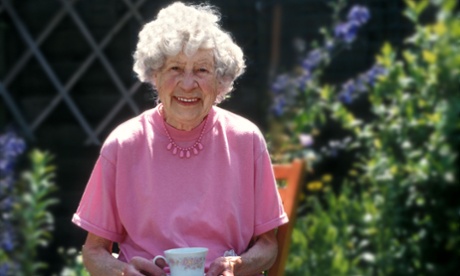Sublime Text 2 is a text editor for OS X, Linux and Windows, currently in beta.

 Global Asia Renewable Energy - PRESS DIGEST - Wall Street Journal - Oct 1
Global Asia Renewable Energy - PRESS DIGEST - Wall Street Journal - Oct 1
PRESS DIGEST - Wall Street Journal - Oct 1
Oct 1 (Reuters) - The following are the top stories in the Wall Street Journal. Reuters has not verified these stories and does not vouch for their accuracy.
* Time Warner Inc's Warner Bros Pictures has a new financial partner that will help fund most of its movie production for several years. The entity, RatPac-Dune Entertainment LLC, will pour $450 million into as many as 75 movies over four to five years, with a few high-profile exceptions. ()
* Cooper Tire & Rubber Co shareholders approved a $2.5 billion sale of the Ohio company to Apollo Tyres Ltd on Monday, clearing the way for what could become the largest U.S. acquisition by an Indian industrial firm. ()
* Yahoo Inc has agreed to pay unspecified damages and legal costs to settle a lawsuit filed by Singapore Press Holdings Ltd over copyright infringement, the two companies said Monday. ()
* Chevron Corp moved Monday to avoid a jury trial in its suit against a lawyer it accuses of fraud in a high-stakes legal battle over pollution in Ecuador's jungles. The firm said that if a federal judge tries the case, it will drop its claims for monetary damages against Steven Donziger, a lawyer who sued Chevron on behalf of an Ecuadorian plaintiff. ()
* U.S. private-equity firm KKR & Co LP is making its biggest ever bet on China, with an agreement to take a 10 percent stake in Qingdao Haier Co Ltd, to gain exposure to China's home appliances market. ()
* Britain's biggest drugmaker GlaxoSmithKline PLC is selling its thrombosis brands, together with the Notre-Dame de Bondeville manufacturing site in France, to South Africa-based Aspen Pharmacare Holdings Ltd for 700 million pounds($1.13 billion). ()
* IKEA, already a major purchaser of renewable-energy equipment to power its own facilities, plans to sell solar panels to customers at 17 stores in the U.K. as the world's biggest furniture retailer tries to meet a growing customer demand for sustainable products. ()
* A trust representing "old" General Motors Co unsecured creditors agreed to stop trying to reclaim funds that GM had paid to a group of hedge funds, among them Paul Singer's Elliott Management and John Paulson's Paulson Partners, in return for the hedge funds reducing their claims against the trust. ()
(c) Copyright Thomson Reuters 2013. Click For Restrictions - http://about.reuters.com/fulllegal.asp
Related Story
http://www.youtube.com/watch?v=0drCNOZPHcI
http://www.sciencedirect.com/science/article/pii/S2211467X13000527

 WellPoint Offers Seniors Tips for Bouncing Back from Hospitalization - Massachussets Westhill Consulting Insurance
WellPoint Offers Seniors Tips for Bouncing Back from Hospitalization - Massachussets Westhill Consulting Insurance
INDIANAPOLIS, Feb 10, 2014 (BUSINESS WIRE) -- Imagine you’ve been in the hospital. You’ve eagerly waited for the day you could go home. When that day finally arrives, you’re thrilled. It’s a safe bet the last thing you want to do is to have to return to the hospital.
Unfortunately, far too many people are returning to the hospital after receiving care there, particularly seniors. According to a study published in the New England Journal of Medicine, nearly one-fifth (19.6 percent) of traditional Medicare beneficiaries who had been discharged from a hospital were re-hospitalized within 30 days, and 34 percent were re-hospitalized within 90 days.1 The Medicare Payment Advisory Commission has estimated the cost of hospital readmissions at $15 billion.
“We know that many of these instances are unavoidable,” said Dr. Mary McCluskey, chief medical officer of WellPoint’s Government Business Division. “However, some are preventable, which is unfortunate since hospital stays can expose patients to a host of complications, including possible infections, as well as being costly, stressful and inconvenient.”
WellPoint, which serves thousands of seniors through its affiliated Medicare plans, offers the following tips for making sure a hospital stay doesn’t end up turning into a round-trip.
Understand discharge directions. The transition home really starts before the patient leaves the hospital. It is critical to understand hospital discharge directions. This isn’t as easy as it sounds since patients may be medicated, stressed, groggy or confused. For that reason, it is recommended that patients repeat instructions to their physicians to make sure they understand them. It also may help to write down the instructions or enlist a family member or caregiver to help document them. Another way for a patient to smooth the transition home is to make sure someone at the hospital contacts their primary care physician (PCP) with information about their condition and treatment. People with chronic conditions see many different doctors. It is important for those doctors to communicate with each other.
Fill prescriptions and take them as prescribed. Upon being discharged from the hospital, it is important to fill prescriptions immediately and take them as prescribed. Patients should make sure to understand the timing, dosage and frequency of each drug. Also, patients should take care to understand how existing medicines, including over-the-counter drugs, interact with new drugs. Finally, if any drugs have been stopped, it’s important to ask why. It may be helpful to get a pill organizer to keep track of medicines.
Get follow-up care. According to America’s Health Insurance Plans (AHIP), half of patients who were re-hospitalized within 30 days did not have a physician visit between the time of discharge and re-hospitalization, suggesting one of the reasons people end up back in the hospital is lack of follow-up care. That is why it’s so critical for people to transition from the hospital to their PCP. Patients should schedule follow-up appointments with their regular doctor and keep them. The PCP can coordinate care, making sure patients aren’t exposed to dangerous drug interactions or unnecessary tests. Anyone with trouble getting a timely appointment can call their insurer for help.
Eat properly. People recently discharged from the hospital need to get proper nutrition, including following any dietary restrictions. Appetite is often suppressed after an illness; however, if someone is too sick to eat due to pain, nausea, inability to swallow, etc., then they should contact their doctor.
Take advantage of programs that are there to help. People with Medicare Advantage plans may have access to resources, including case managers, to help them return safely to their homes. Case managers may be able to help a recently discharged patient find transportation to doctor appointments, address potential safety issues in the home and help them locate community programs offering everything from meal delivery to free or discounted medicines. These people are experts at understanding the system and it is their job to help.
Know when things aren’t getting better. Patients should understand which symptoms require immediate intervention and return to the hospital, if necessary. People who aren’t getting better shouldn’t wait for their next appointment.
Be an engaged consumer. Many trips to the hospital occur without warning. However, people with advance notice have resources available to help them research quality and cost. Information about readmission rates for certain hospitals, for example, is available at www.hospitalcompare.hhs.gov , where visitors can enter a procedure and a zip code, select three hospitals, and click “Outcome of Care Measures” to compare results.
“Most of us will have to go to the hospital at some point in our lives,” said McCluskey. “The key is being an engaged patient to prevent hospitalization from becoming a downward spiral, both physically and financially.”
WellPoint affiliates are PPO plans, HMO plans and PDP plans with a Medicare contract. Enrollment in WellPoint affiliated plans depends on contract renewal.
1 Jencks SF, Williams MV and Coleman EA. “Rehospitalizations among Patients in the Medicare Fee-for-Service Program.” New England Journal of Medicine, 360(14): 1418-1428, April 2, 2009.
SOURCE: WellPoint
WellPointDoug Bennett Jr., (502) 889.2103 Doug.BennettJr@wellpoint.com

 The 10 Places Where Health Insurance Costs The Least - Quora - Massachusetts Westhill Consulting Healthcare Insurance
The 10 Places Where Health Insurance Costs The Least - Quora - Massachusetts Westhill Consulting Healthcare Insurance
By EDITOR
People in much of Minnesota, northwestern Pennsylvania and Tucson, Ariz., are getting the best bargains from the health care law's new insurance marketplaces. Their premiums run half as much as those in the country's most expensive markets.
The 10 regions with the lowest premiums in the nation also include Salt Lake City, all of Hawaii and eastern Tennessee. This ranking is based on the lowest cost of a silver plan, the midrange plan most consumers are choosing.
What sets these bargain markets apart? They tend to have robust competition among hospitals and doctors, allowing insurers to wrangle lower rates.
Many doctors in these places are salaried rather than being paid by the visit or procedure. The salaried approach weakens financial incentives to perform more procedures. Health systems focus on organizing patient care rather than letting specialists work detached from each other.
The lowest monthly silver premium in the country is offered in the Minneapolis-St. Paul region, where a 40-year-old will pay $154 a month for a Preferred One plan. Just across the Wisconsin border, that same kind of plan — but with a different insurer and other doctors and hospitals — costs nearly three times as much.
Insurers were able to negotiate low rates with hospitals and doctors in the Twin Cities because they could choose from among four major health care systems. Both Fairview Health Services, which runs the University of Minnesota Medical Center and is included in the lowest plan's network, and Allina Health, the largest system in the Twin Cities and operator of Abbott Northwestern Hospital, have been in the vanguard of experimenting with more efficient ways to care for patients, such as accountable care organizations and putting doctors on salary, said Stephen Parents, a health economist at the University of Minnesota.
"Minnesota has had years if not decades of experience with managed care," he said.
Most counties in central and northern Minnesota also have premiums that are among the lowest in the nation. Michael Rothman, commissioner of Minnesota's Department of Commerce, which regulates insurers, said the state moved early to enact cost controls, such as restricting how much insurers can spend on things other than medical care and requiring annual insurance rates to go through state review.
Several of the other lowest cost areas, including Salt Lake City and Hawaii, also have major hospitals and health systems that have been at the forefront of integrating health care. Those systems foster and reward collaboration among primary care doctors, specialists and nurses. But people who buy the cheapest Salt Lake City plan won't have access to Intermountain Healthcare, the most prestigious system in the area.
Innovative hospital practices don't guarantee cheap insurance. In Rochester, Minn., the home of the Mayo Clinic, the lowest priced silver plan costs $305 a month, which is above the national median.
Although Mayo's doctors are salaried and the system practices integrated care, its prices are higher than in Minneapolis, said Dannette Coleman, an executive at Medical, the insurer that offers the lowest priced silver plan in that area. Given Mayo's extensive network of clinics in the region, "you really cannot be in that area in that state if you don't have the Mayo Clinic Health System in your network," she said. Mayo officials didn't respond to a request for comment.
In eastern Tennessee, cheap premiums are notable because many residents face chronic health issues. Obesity and smoking are common. "We're the buckle of the stroke belt," said Kevin Spiegel, president of Erlanger Health System, which is included in the network of the least expensive silver plan in Chattanooga. Blue Cross Blue Shield of Tennessee was able to offer the lowest silver premiums around Knoxville and Chattanooga — $180 a month for a 40-year-old — by cutting deals with just one hospital system and their doctors in each region, said Henry Smith, the insurer's chief marketing officer.
"There are competing systems within those two regions to price against," Smith said. These lowest premium plans are "the narrowest network we have by far."
Likewise, in western Pennsylvania, Highmark was able to offer the low premium — $164 for a 40-year-old — by omitting nine hospitals and about 3,000 doctors who charge higher prices, according to spokeswoman Kristin Ash. Consumers wanting a wider network will have to pay Highmark 38 percent more a month.
These competitive markets are quite different than in southwest Georgia, the second most expensive region in the country. Blue Cross Blue Shield of Georgia had no choice but to include in its network the Phoebe Putney Health System, which controls 86 percent of the market. The lowest premium in southwest Georgia is $461, 2 1/2 times the rate in Chattanooga.
Copyright 2014 Kaiser Health News. To see more, visit Kaiser Health News.
Westhill Consulting Insurance - Saving for your ageing parents: an easy guide to where to start - Westhill Consulting Insurance

 Massaging for Health, a Jennifer Shearin Group Wellness Coaching on Bing
Massaging for Health, a Jennifer Shearin Group Wellness Coaching on Bing
Make powerful choices to create your maximum level of health with my facilitation skills and the wisdom and support of a group. Visit Jennifer Shearin Group Wellness Coaching.
Read full article: http://www.bing.com/blogs/webmaster/f/12248/t/687054.aspx
Related Topics:
About Jennifer Shearin Group Wellness Coaching
Jennifer Shearin Group Wellness Coaching: 75 Ways to Wellness

 Westhill Consulting Insurance – Saving for your ageing parents : an easy guide to where to start
Westhill Consulting Insurance – Saving for your ageing parents : an easy guide to where to start
The needs of elderly parents can surprise even those who are prepared, but you don’t have to support your family alone

We all want to age like the late Pete Seeger, who celebrated his 90th birthday performing onstage in front of thousands of adoring fans of all ages at Madison Square Garden, and went on to entertain the Newport Jazz Festival audiences a few months later.
In our pragmatic moments, we know that the odds of living that long and in such good health aren’t in our favor. We know we need to plan not only to live longer but perhaps to spend more time in costly nursing homes or care facilities.
It's not just ourselves we have to worry about. Failing to develop a plan to help our parents in their final years could deliver a similar kind of blow to our emotional and financial wellbeing. In the last few months, I’ve watched three friends, ranging in age from their 40s to the early 60s, scramble to resolve non-medical problems for their parents. In all cases, that meant forking out on costly airfares to be there in person; in one case, it required money to hire a new accountant. “I’ve always been aware that at some point, there would be an emergency, but I had assumed it would be a stroke or something, not this,” one told me, ruefully.
A recent US Trust survey revealed that while about half of all Americans have planned for their own long-term care needs, only 18% of those with parents still living have factored in the possible need to help parents.
And yet, 26% of those under the age of 49 already were footing the bill for parents’ out-of-pocket medical expenses while 18% were contributing to long-term care costs.
I’m not suggesting that you double your savings rate to ensure that your nest egg is large enough to cover your needs as well as the needs of your parents and in-laws. That’s both illogical and – given that most of us are struggling to save for our own retirement – impractical. That doesn’t mean your hands are tied, however.
Start with the basics. Make a list of questions and fill out the answers. It's easiest to start with the most important documents you need to be prepared.
Do your parents have a health care proxy? A power of attorney prepared? Where are they located? In the midst of a crisis, you don’t want to go on a treasure hunt in quest of these crucial documents.
“Clients call me to say that hospitals won’t talk to them about treatment for their elderly father with dementia because no one has a healthcare proxy or knows where it is,” says Nan Giner, a partner at Boston-based Choate Investment Advisers.
Do your parents have long-term care insurance, or do they plan to “self-insure” and cover their costs from their savings?
“Knowing the answer to that question can help you understand how much risk there is that you’ll be called on to help” whether directly or by helping them to navigate the labyrinth of federal, state and local programs that exist to help fill gaps of this kind, says Dave Richmond, a financial adviser in Jackson, Michigan.
Beginning conversations on these topics might feel awkward – after all, it hasn’t been that long since your mom and dad were monitoring your behavior. But it’s important to be proactive. The more you’re able to communicate openly, the better the odds that you’ll spot something that otherwise might have developed into a crisis.
“Most of the parents I’ve worked with don’t want to be a burden to their children,” says Gideon Schein, founding partner of Eddy & Schein, a New York firm that manages personal finance and health insurance issues for senior citizens still living in their own homes. “The best way is to make parents aware that you’re asking for everyone’s benefit; that it’s a kindness to everyone in the family to be prepared – not for death, but for the rest of their lives.”
There are plenty of tips out there for ways to start tricky conversations like these. Bringing a third party into the discussion can also help, especially if your parents feel you’re overstepping your bounds, or you’re afraid of sounding greedy or self-interested. “Sometimes having a mediator takes the tension out of a situation,” says Schein.
A good place to start is an elder care attorney, who is intimately familiar with these issues, including specialized vehicles like pooled income trusts that can be invaluable to elderly individuals facing a financial shortfall in covering the cost of their care in their final years. They can refer their clients to other specialists, including people in Schein’s rapidly-growing industry, members of the American Association of Daily Money Managers.
None of this practical stuff will make it easier to deal with the emotional burden of octogenarian parents struggling with dementia or other major ailments. But part of everyone’s personal financial plan should include strategies for dealing with some of the most likely scenarios involving their parents. That leaves everyone in a less vulnerable position.
http://www.youtube.com/user/westhillconsultingIn

 The Economist explains - Why is renewable energy so expensive?
The Economist explains - Why is renewable energy so expensive?
Enthusiasts have used wind turbines to generate electricity since the 1880s, but efforts to build very large wind farms started only in the late 1970s. Utility-scale solar and other renewable generation is more recent still. Despite the lure of government subsidies, there are still too few companies making renewable kit (almost all the wind turbines in British seas, as one example, are produced by a single firm). Supply-chain bottlenecks have frustrated governments scrabbling to install new renewable capacity. And compared with traditional power stations, renewable generators are cheap to run but costly to build, which makes them particularly vulnerable to changes in the cost of capital.
A more fundamental challenge is that renewable generators also impose costs on the wider electricity grid. The best sites are often far from big cities (on Scottish hillsides, French lakes or American deserts) which makes them expensive to connect. Many common types of renewable generators only produce power intermittently—when the sun shines or when the wind blows. Wind turbines, for example, spin only about a third of the time. That means countries which have a lot of renewable generation must still pay to maintain traditional kinds of power stations ready to fire up when demand peaks. And energy from these stations also becomes more expensive because they may not run at full-blast.
The high cost of renewable generators obstructs efforts to tackle climate change, even when governments dig deep to fund them. One danger is that sharp rises in energy prices will drive manufacturers to set up in less “green” countries, which might mean citizens end up consuming more carbon, through imports. Another worry is that governments will end up extending the life of dirty coal plants to serve as back-up when renewable generation is low—or when over-ambitious renewable roll-outs run out of steam. But for now the main consequence of high renewable costs is growing interest in controversial alternatives. The price of nuclear power has been rising for decades, but it still looks less expensive than many types of renewable generation. Gas-fired power stations are roughly half as polluting as coal-fired ones. Building more of them could provide a cheaper way for countries to cut emissions in the short term, and buy renewable operators time to bring their costs under control.
http://www.economist.com/blogs/economist-explains/2014/01/economist-explains-0?fsrc=gn_ep

 Crown Capital management environmental monitoring: For Already Vulnerable Penguins, Study Finds Climate Change Is Another Danger
Crown Capital management environmental monitoring: For Already Vulnerable Penguins, Study Finds Climate Change Is Another Danger
Life has never been easy for just-hatched Magellanic penguins, but climate change is making it worse, according to a decades-long study of the largest breeding colony of the birds.
The chicks are already vulnerable to predation and starvation. Now, the study at Punta Tombo, Argentina, found that intense storms and warmer temperatures are increasingly taking a toll.
“Rainfall is killing a lot of penguins, and so is heat,” said P. Dee Boersma, a University of Washington scientist and lead author of the study. “And those are two new causes.”
Climate scientists say more extreme weather, including wetter storms and more prolonged periods of heat and cold, is one impact of a climate that is changing because of emissions of greenhouse gases in the atmosphere. While monitoring the penguin colony, Dr. Boersma and her colleagues also documented regional temperature changes and increases in the number of days with heavy rains.
The study, which is being published online Wednesday in the journal PLoS ONE, is one of the first to show a direct impact of climate change on seabirds. Most studies have looked at how warming temperatures affect animals indirectly, by altering predation patterns or food supplies.
William J. Sydeman, senior scientist at the Farallon Institute in California, who was not involved in the research, said the study linked changes in climate, which occur on a scale of decades, to the daily scale of life in the colony. “That’s a unique contribution,” he said.
The colony at Punta Tombo, in a temperate and relatively dry region about midway along Argentina’s coast, is home to about 200,000 breeding pairs of the penguins, which are about 15 inches tall as adults. Dr. Boersma has been working there since 1982, with long-term support from the Wildlife Conservation Society.
For this study, the researchers compiled data on nearly 3,500 chicks that they meticulously tracked by checking nests once or twice a day throughout the six-month breeding season, which starts in September.
“We knew when each chick hatched, and its fate,” Dr. Boersma said.
Typically, nearly two-thirds of hatchlings at the colony do not survive to leave the nest. In most years, the researchers found, starvation and predation — by other seabirds and small animals — caused the majority of the deaths.
But they found that heavy storms killed birds in 13 of the 28 years of the study. In two years, storms were responsible for most of the deaths. Extreme heat killed more hatchlings as well, although the effect was less pronounced.
Like other young birds, penguin hatchlings can die from hypothermia if their down gets wet and loses its insulating air spaces. The birds are most vulnerable from about a week after hatching — before that they are largely protected by a parent — to about six weeks, when they develop waterproof plumage.
“They didn’t used to have to contend with this variability in the climate,” Dr. Boersma said. “And they certainly didn’t have to contend with all this rainfall.” …….continue reading @ http://crownecomngment.newsvine.com
http://crowncapitalmngt.com/
https://twitter.com/crownecomngment/

Weather extremes are leading to an increase in penguin chick mortality in a large breeding colony in Argentina.
Source: http://blog.crowncapitalmngt.com/for-already-vulnerable-penguins-study-finds-climate-change-is-another-danger/

 WordPress | A Road to Wellness Less Travelled, Jennifer Shearin Group Wellness Coaching
WordPress | A Road to Wellness Less Travelled, Jennifer Shearin Group Wellness Coaching
With the upsurge of the wellness industry in the past thirty years, more and more people are living well-balanced and active lives. And as the essential medical knowledge and practices improve even more, we can look forward to more people living up to a hundred years or more, something which was apparently a common thing in ancient times. In certain parts of the world, such as Thailand, Spain, Japan, France and the US, where we can find the most number of centenarians, dietary and lifestyle habits are commonly investigated and emulated as effective means of achieving not just long-life but for maintaining a sense of well-being.
If it was such a common thing for people to live up to a hundred or even much longer in ancient times, how come modern people no longer approach that level of physiological durability? We are more of an exception now rather than the rule in biological longevity. Sea turtles, swans and carps and some other animals have longer average life spans than us humans. And they do not even read bibles and blogs!
But we should not despair as life is, as often said, not measured in the length of one’s life but in the quality of life that one has. What human can survive living in water as tortoises and carps do? Yet the quality of life, not just the length of it, can now be attained through observing certain basic health tips and lifestyle changes any person can do without having to spend so much. And one need not reside in Okinawa or in Nepal to achieve this.
Jennifer Shearin provides a valuable list of how one can attain wellness, and, it follows, a long and happy life. She does not tell her readers to do all, of course. One only has to choose those that fit one’s budget and other conveniences in life.
Take, for instance, tip # 45 on taking up yoga. Yoga, admittedly, has so many health benefits. But such benefits can only be attained through some rigorous body exercises unique to yoga. Here is where many people feel challenged, especially the aged and the physically disabled? What then? As suggested, one must look for other alternatives while trying to achieve the same health benefits.
Certain ancient Chinese breathing exercises are known to provide rejuvenation of internal organs through slow, meditative deep-breathing routines. Almost any person of any age and even with disabilities can practice them. Perhaps, certain body movements, just as certain expensive foods are inaccessible to most people, are not meant for everyone. But there are certainly other ways to get the health benefits through some other means.
And with 74 ways to choose from, Jennifer Shearin has certainly covered most bases when it comes to having a healthy, happy and long life. For that, we can only thank her.
Watch the video online of A Road to Wellness Less Travelled, Jennifer Shearin Group Wellness Coaching
To join conversations about having a healthy, happy and long life, visit http://ellislab.com/forums/viewthread/242809/

 Travel Tips by Westhill Consulting Tours - 10 Things to Know About Travel in Southeast Asia
Travel Tips by Westhill Consulting Tours - 10 Things to Know About Travel in Southeast Asia
By travelwesthill
Lots of globetrotters and backpackers have journeyed to the fertile and culturally rich Southeast Asia. Known for its beautiful beaches, mesmerizing historical sights and a touch of adventurousness, this comparatively inexpensive travel destination baits thousands amongst thousands of people every year with landmarks like Angkor Wat, Cambodia; the city of Bangkok, Thailand; and the scenic views of Ha Long Bay, Vietnam. Don’t forget Jakarta Indonesia a surprise in Southeast Asia.
As much as we highly recommend you visit these places, the prudent traveler will do his/her homework as to abide the laws and traditions of these very different countries, as well as be prepared to face the risks, both financial and otherwise that could wind up tarnishing your vacation.
Almost everything is negotiable, almost: Haggling can be more beneficial in Southeast Asia than in most places in the world. Vendors at most malls and shops do not have price tags and it is common that when you ask for one, the price will be quite high because it looks like you have cash to burn. Don’t be afraid to ask for a lower price since another vendor just a few feet way is sure to be selling the same thing.
The food is great, just be careful: Renowned for its amazing cuisine, both on the street and in the restaurants, eating in SE Asia is one of the most exciting parts of going, but be cautious before eating just anything. One tip is to check if you see other patrons dining at a location before you go in.
Also, many of these countries have free English-written dining guides. Check them out.
Watch your pockets: Whether you are on the back of a motorbike or walking down the street, muggings and scams happen everywhere. Keep your personal belongings near to you at all times, perhaps consider a fanny pack or only bringing along essentials where you’re out of the hotel. This is a justified warning.
There is more to life than ‘backpacker street’: SE Asian countries have become very good at creating mini-tourism hubs of inexpensive hotels or hostels and surrounding them with vendors and bars and everything you need so that you don’t leave.
Granted, in places like Saigon and Bangkok, they are a lot of fun, but make a point to get out and explore other places. You’ll never know what’s waiting just around the corner.
Wetshill Consulting Travel & Tours based in Singapore specializes in in giving advice and tips for tourists from Australia, Canada, US and all countries all over the world.
Check the local rags and mags: As I mentioned before, most SE Asian countries have English-written guides. That’s because in a number of countries there, there is already an established community of expatriates. If you are looking to just find your bearings and want a safe bet on places to go, pick one up.
Be prepared to be approached by strangers: Locals in Southeast Asia are often very nice toward westerners and truthfully enjoy telling you how nice you look. Whether it is coming from a man or woman, get ready for a swarm of compliments on your appearance. It may seem a little strange at first, but you will get used to it. I promise.
This scotch does not taste like scotch: Drinks are a quarter of the price than what you’d find in Europe or in the U.S., the reason being that many of the typical name brands are regionally produced and use local ingredients, so don’t be shocked when your beloved Grey Goose on ice tastes a little different from what you are used to. Use the opportunity to try some very interesting locally produced spirits.
Take the tour deals seriously: Pretty much anywhere you go (of the major tourist destinations) there are sure to be tour pamphlets sitting around with great deals. From boat rides to day trips, there are great tours around that will get you where you need to go.
Hire local transport for the day: One great way to get around is to hire a tuk tuk or a moto-driver for the whole day to take you everywhere you want to go for a very nominal price. Your driver can also work as a de facto tour guide, getting you around to the spots you may not have thought of and that you would regret not seeing.
When you can, take a bus or train: When it comes to budget traveling, this is the way. Night buses get you from one country to the next for next to nothing, although they do take longer, no doubt about that. Roads between many destinations are well enough to travel, although there are going to be bumpy rides. None the less, when you need to do it on the cheap, this is the best option.
Related Stories:
http://www.quora.com/Westhill-Consulting-Jakarta-Travel-and-Tours
http://syosset.patch.com/groups/opinion/p/westhill-consulting-travel-and-tours-jakarta-travel-tips_cad475dc
http://www.goodreads.com/group/show/108506-westhill-consulting-travel-tours-inc
Servicio de atención al cliente por UserEcho


